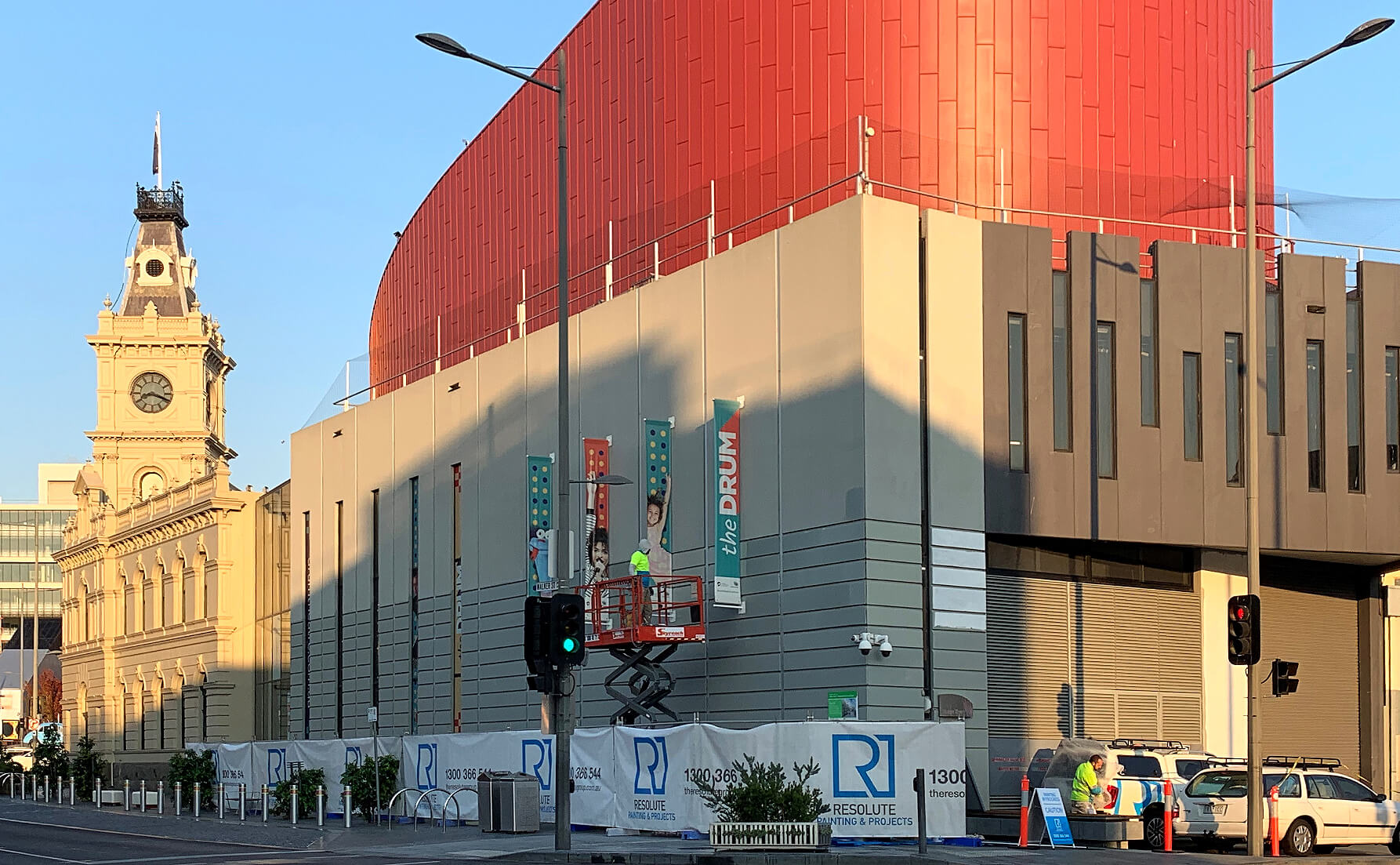


Commercial painting does more than give a building a new colour. It protects surfaces from wear, keeps properties in good condition, and makes a space feel professional and welcoming. In Melbourne, where historic buildings sit alongside brand-new developments, painting projects need the right planning, preparation, and a team that knows how to handle different building types.
In this guide, we’ll cover the essentials of commercial painting. You’ll learn what constitutes a commercial project, how jobs are scoped and delivered, the factors that influence cost, and the safety standards applicable in Victoria. We’ll also touch on how to look after your property once the work is done, so the finish lasts as long as possible.
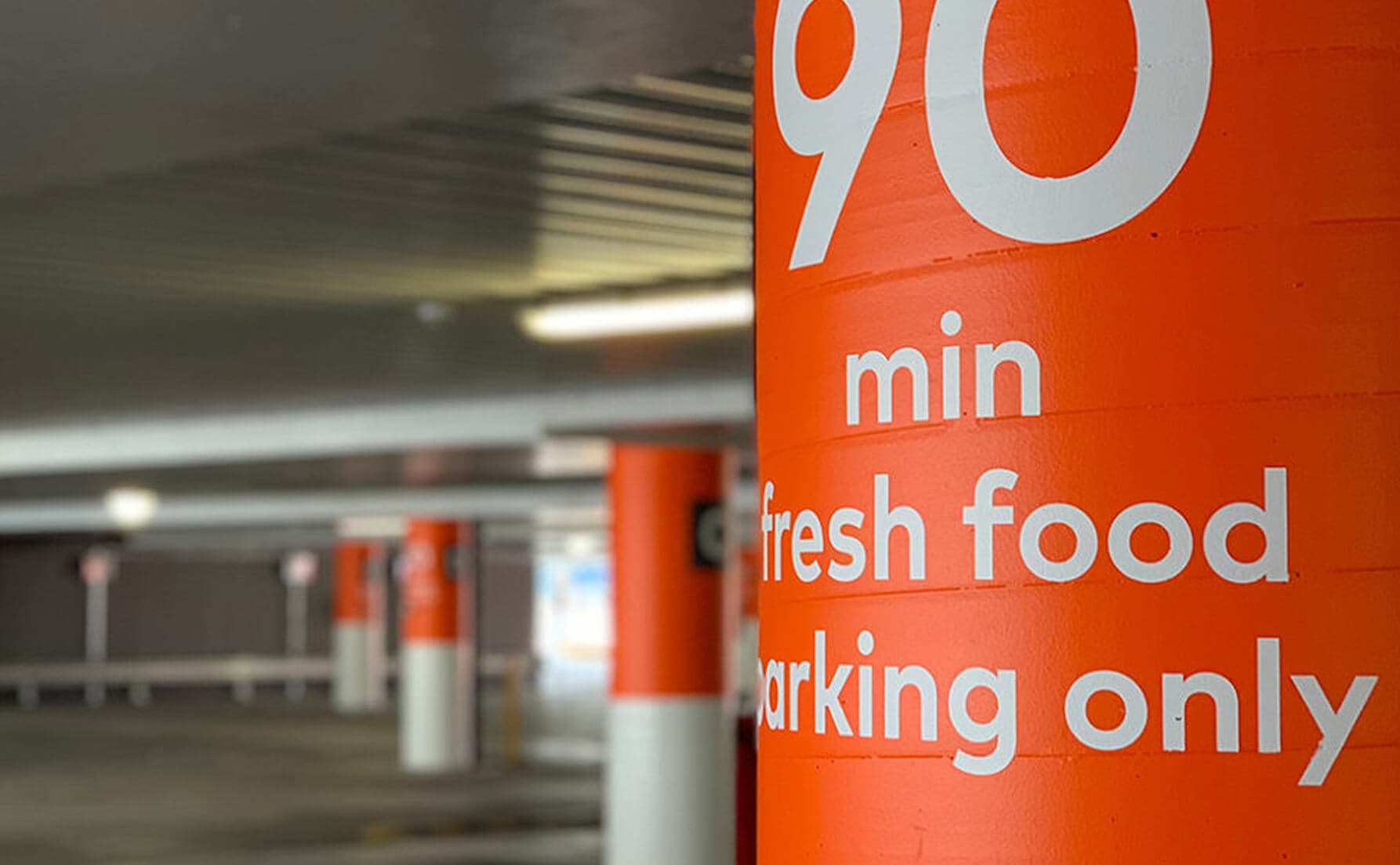
This guide covers everything you need to know about commercial painting in Melbourne. It explores project planning, pricing, safety, maintenance, and how to choose the right contractor. Use the links below to navigate to the sections that matter most to your project.
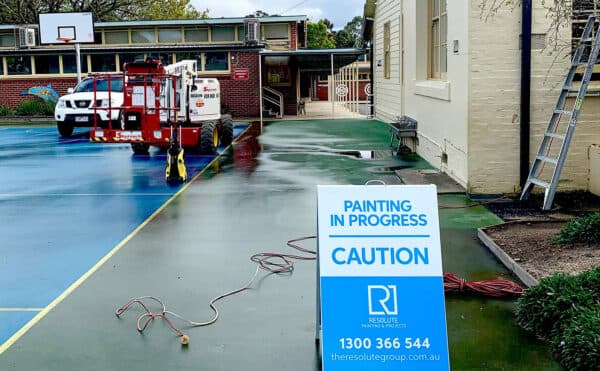
Commercial painting covers the painting and finishing of buildings that are open to the public, occupied by multiple tenants, or used as workplaces. These projects are often on a larger scale than residential jobs and may involve a mix of surfaces such as concrete, steel, plaster, and timber. Access can also be more challenging, with high walls, ceilings, or facades that require specialised equipment.
Unlike residential painting, commercial projects operate under tighter timeframes and must comply with building codes and safety regulations. Work often occurs outside business hours to minimise disruption. The scope extends beyond colour application to include surface preparation, protective coatings, and finishes that withstand high-traffic commercial environments while coordinating with other trades and property managers.
Hiring a professional makes a difference because commercial painting involves more than just applying paint. Skilled contractors bring expertise in preparing surfaces, choosing the right coatings, and working safely. Here are some of the key benefits:
Commercial properties are buildings that people use for work, education, healthcare, or public access.
Commercial properties include:
Commercial projects are larger and more regulated than residential but less hazardous than industrial work.
Residential painting is the most straightforward. Contractors work with homeowners who want their property to look good, using standard paints and basic equipment. It's primarily about creating spaces that are comfortable and attractive.
Industrial painting is at the other extreme. Think of factories and warehouses where paint needs to protect against chemicals, heat, and heavy wear. Safety is paramount, and the coatings are heavy-duty rather than aesthetically focused.
Commercial painting falls somewhere in between. Contractors work on offices, shops, and public buildings where appearance matters, but the paint also needs to withstand significant foot traffic and daily use. Projects are larger than residential jobs, involve more stakeholders making decisions, and often require working outside of business hours. Commercial painting contractors also deal with stricter building codes and may need specialised equipment for high ceilings or large facades.
Commercial painting can involve a range of services, such as:
Line marking and specialty finishes – clear markings for carparks and warehouses, plus specialist coatings such as slip-resistant, anti-graffiti, or fire-retardant paints.
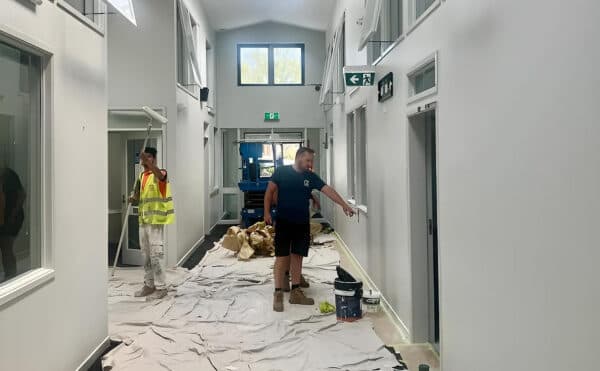
Good commercial painting projects don't just happen. They require proper planning and clear processes to avoid delays, cost blowouts, and unhappy tenants.
Meeting on-site to understand what needs painting, any access challenges, and timing requirements. This is where you discuss whether work needs to be done after hours or can be completed during business hours.
Checking the condition of existing surfaces, identifying any necessary repairs, and documenting the exact work to be done. This prevents disputes later about what was included.
Coordinating with building management, tenants, and any other trades. For larger projects, this might involve staging the work across different areas or time periods.
Obtaining any required approvals. This might include body corporate approval, council permits for external work, or coordination with building management.
Following the agreed-upon timeline, with regular communication about progress and any issues that arise.
Ensuring everything meets the agreed standards before the job is considered complete.
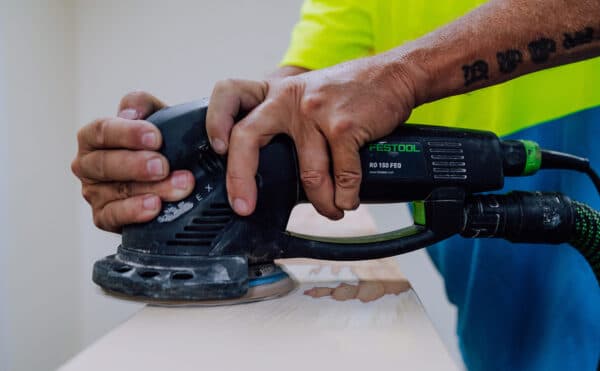
Surface preparation takes up more time than the actual painting, but it makes the difference between a job that lasts and one that fails within a year or two. The work required depends on what you're dealing with. Newer buildings in good condition typically require minimal preparation, while older buildings with damaged surfaces may need extensive repair work before any paint is applied.
Surface preparation typically involves:
Removes dirt, grease, and loose material that would prevent paint from sticking properly. Commercial exteriors might need pressure washing, while internal walls usually just need thorough cleaning to remove dust and grime.
Address any damage before painting begins. This could be filling small nail holes in an office, patching larger holes in plaster walls, or fixing damaged render on external surfaces. Getting this right means the finished job looks professional and lasts longer. A great step to take before choosing a commercial painting company is ensuring that they will take care of plaster & render repairs, and carpentry repairs.
Prepare different surfaces for painting. Timber needs sanding to create a smooth base, metal surfaces might need special primers to prevent rust, and previously painted surfaces may need light sanding to help the new paint stick.
Covers everything that shouldn't get paint on it. In commercial buildings, this includes floors, furniture, equipment, and sometimes entire areas that need to stay operational during the work. Good protection saves time and money on cleanup later.
The right paint for a commercial environment depends on where it's being used and what it needs to withstand. Different areas of a commercial building have different requirements.
Acrylic paints are the preferred choice for most commercial interiors and exteriors. They dry quickly, resist fading, and have low VOC content, which is important for occupied buildings like offices, schools, and healthcare facilities. These paints handle everyday wear and tear while maintaining good indoor air quality.
High-traffic formulations use harder-wearing paint chemistry for busy areas like corridors, stairwells, and lobbies. These paints cost more upfront but save money over time because they last longer. They're designed to handle constant use without showing scuff marks or wearing through quickly.
Epoxy coatings suit areas that need serious durability, like commercial kitchens, warehouses, or manufacturing spaces. These coatings resist chemicals, moisture, and heavy wear better than standard paints. They're often used on floors and walls in industrial-type commercial spaces.
Polyurethane coatings offer similar benefits to epoxy, but with improved UV resistance, making them suitable for areas with abundant natural light or exterior applications. They handle weather changes well and resist scratching and chemical damage.
Finish selection matters as much as paint type. Semi-gloss and gloss finishes are easier to clean and work well in high-traffic areas, bathrooms, and kitchens. Matte finishes hide surface imperfections better but are more difficult to clean, making them suitable for lower-traffic areas, such as private offices. Specialised coatings might be required for specific situations. Antibacterial coatings are sometimes necessary in healthcare or food preparation areas, although they're not always required. Some commercial spaces require fire-retardant paints or other specialty products, depending on building codes and usage. Explore our guide about choosing the right finish.
Additionally, it's important to consider how the colours you choose impact the psychology of the people who'll see your commercial building. Odds are that either your customers or employees will be seeing your property on a regular basis, so ensuring you're considering how this can shape customer experience and perception is crucial. Find out more in our guide on the importance of colour in commercial painting.
Last but not least, it's important to choose a trusted paint brand that guarantees quality. At Resolute Painting & Projects, we have access to a range of brands available in Melbourne. This gives us access to a broad range of colours and coats for any situation.
When it comes to commercial painting, no two projects ever run to the same clock. A small office makeover might be wrapped up in just a few days, while a sprawling multi-storey complex can keep painters busy for weeks on end. The difference often comes down to scale, access, and the little curveballs that every building throws into the mix.
Other trades – coordinating with electricians, repair crews, or maintenance teams can extend timelines significantly.
Painters aim to minimise disruption by adjusting their work methods to suit the site. This often means scheduling jobs outside business hours, during holiday periods, or at quieter times of day. Larger projects are staged so only small sections are closed off at once, allowing the rest of the building to remain in use.
Low-odour and quick-drying paints are chosen where possible to speed up re-entry and reduce inconvenience. Just as important, painters maintain open communication with tenants, staff, and managers so that everyone is aware of which areas will be affected and when.

When choosing a painter for a commercial project, look for a contractor with the skills, resources, and systems to manage the specific challenges of larger or shared buildings.
At Resolute Painting, we are an experienced team specialising in commercial painting in Melbourne. We are accredited and part of associations, and we have received industry recognition, including winning multiple Master Painter awards. Find out more about our team and our story.
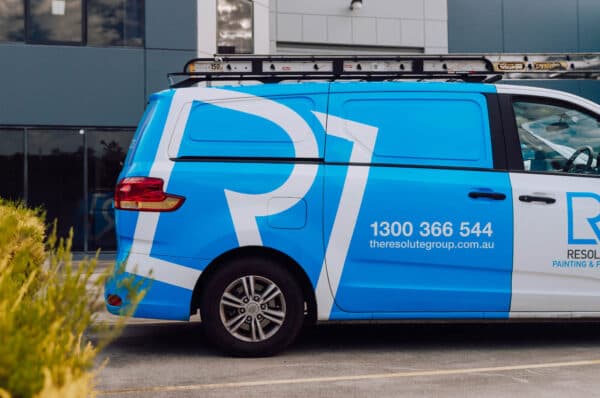
Commercial painting costs vary significantly, but here are some typical pricing structures used in Melbourne:
Per square metre rates are the most common pricing method. Interior commercial work typically costs $25-35 per square metre for basic projects, with more complex jobs reaching $40-50 per square metre. Exterior work ranges from $20-30 per square metre for standard buildings, increasing for multi-storey buildings that require access equipment.
Hourly rates might be used for smaller touch-up jobs or repair work, typically ranging from $60-80 per hour for qualified commercial painters. However, most commercial projects are quoted as fixed prices to provide cost certainty.
Project examples help put these rates in context:
These are rough guides only. Every commercial project is different, and the only way to get accurate pricing is through a proper site inspection and a detailed quote. It’s best to consult a local commercial painting contractor to obtain a clear understanding of the costs associated with your building.
A good commercial painting quote should break down what's included, allowing you to compare different contractors properly.
A quote will typically include:
Access equipment is often required for multi-storey or difficult-to-reach areas. Depending on the building, this may involve:
Some contractors include the cost of this equipment in their quote, while others list it separately. It’s worth confirming early so you know exactly what is and isn’t covered.
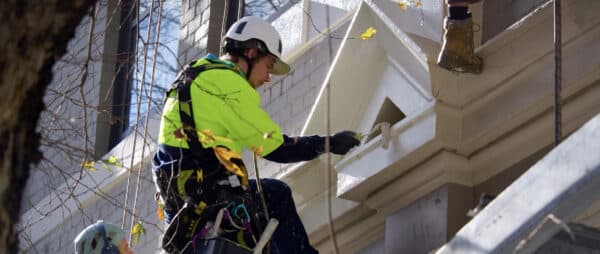
Commercial painting in Victoria operates under several regulatory frameworks that don't apply to residential work.
WorkSafe Victoria requirements cover occupational health and safety for all commercial painting projects. This includes proper safety equipment, training records, and specific procedures for working at heights. Contractors must have current WorkSafe compliance and know how to implement safety management systems on commercial sites.
Licensing requirements vary depending on the project value and type. Painters working on commercial projects need appropriate trade licenses, and larger projects may require building permits. General building licenses are necessary for projects that involve structural work in addition to painting.
Insurance obligations include public liability and professional indemnity insurance with coverage levels appropriate for commercial work. Workers' compensation insurance is mandatory for any contractor with employees.
Material Safety Data Sheets (MSDS) must be available for all products used on commercial sites. This includes paints, primers, solvents, and cleaning products. Site personnel require access to this information, and specific handling procedures may be applicable.
VOC compliance refers to the limits on volatile organic compounds (VOCs) in paints used in occupied buildings. Some commercial buildings, particularly healthcare and education facilities, have specific requirements for low-emission products.
Working at heights regulations apply to any work above two metres. This covers safety equipment, training requirements, and rescue procedures. Commercial painters need current working at heights certification and appropriate safety systems.
Permit requirements for commercial painting depend on the location, building type, and scope of work.
External painting on heritage buildings or in heritage overlay areas typically requires council approval. This applies to colour changes, not just maintenance painting. The approval process can take several weeks, so factor this into project timelines.
Scaffolding permits may be required if scaffolding extends over public land, footpaths, or roads. This is common for multi-storey buildings in busy areas. Council permits for scaffolding usually involve fees and specific safety requirements.
Building permits become necessary when painting work involves structural changes, such as repairing damaged render or replacing weatherboards. Simple painting over existing surfaces typically doesn't require building permits.
Body corporate approval is required for strata and owners' corporation buildings, even when no council permits are needed. This process varies between buildings but often requires detailed proposals and can take time to get through committees. Explore our tips for navigating the rules and regulations of strata painting in Melbourne.
Occupancy considerations might require coordination with building management about access, timing, and safety procedures, particularly in mixed-use buildings or those with 24/7 operations.
Safety on commercial sites is more complicated than residential work because you're dealing with public access, multiple building users, and often tricky working conditions.
To manage this, several layers of protection are put in place:
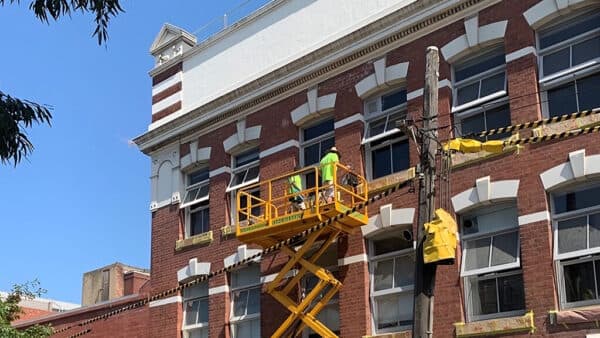
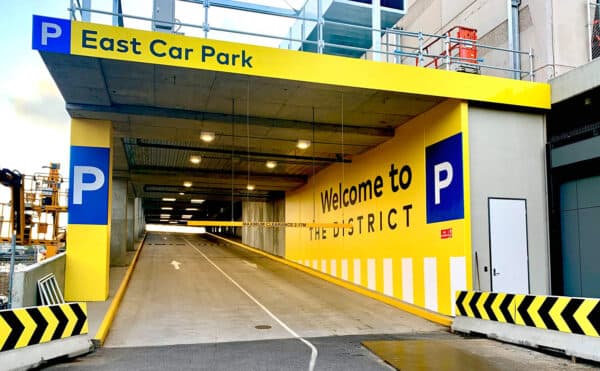
The lifespan of a paint job depends on the type of building, the coatings used, and the conditions to which it’s exposed. On average, commercial properties in Melbourne benefit from repainting every 7 to 10 years. High-traffic interiors or exteriors exposed to harsh sun and weather may need attention sooner.
Regular maintenance helps extend the life of a paint job and reduces costs over time.
Common upkeep includes:
A consistent maintenance plan keeps buildings looking professional, reduces long-term repair costs, and ensures that coatings continue to protect the underlying structure.
If you’re planning a commercial painting project in Melbourne, it's helpful to have a team that understands the details involved. At Resolute Painting and Projects, we handle everything from surface preparation and access equipment to permits and repairs, so the process runs smoothly from start to finish.
Contact our team to discuss your requirements and arrange a customised quote.